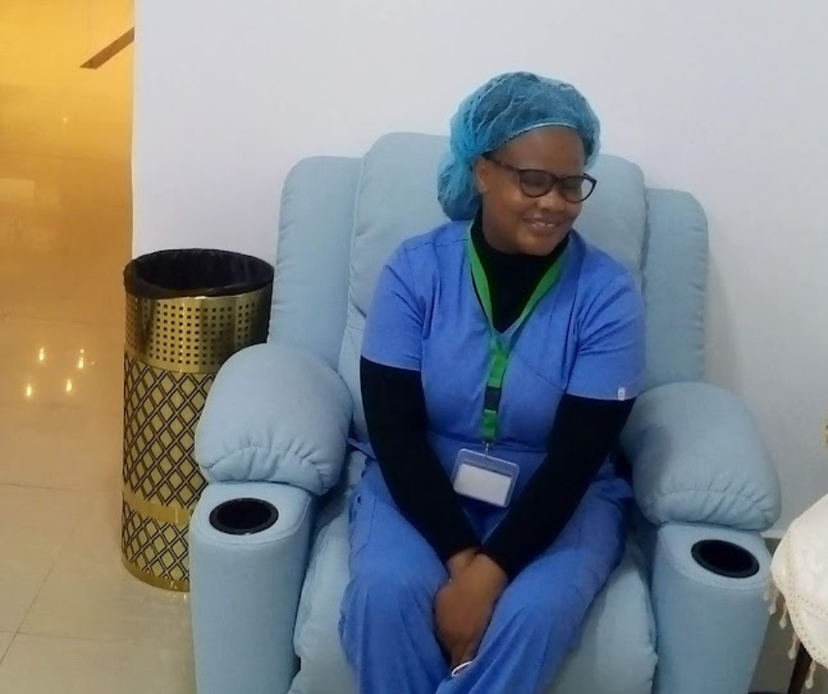24 hours in the life of a TB nurse
Florence Riaga discusses her working life and daily challenges as a TB nurse in Kenya
31 Oct 2024
Florence Riaga is a TB nurse working in Kenya
In this guest blog post, submitted as part of the global #CLINICAL24 conversation, Florence Riaga discusses her working life as a tuberculosis (TB) nurse in Kenya.
About my job as a TB nurse
As a TB nurse, I empower other healthcare workers to find active TB cases in the hospital, in order to help wipe out TB cases in Kenya. I carry out TB case finding for all age groups in the hospital from all entry points and outreach on social networking services for PLWA and key populations through community health volunteers and counsellors. My role includes managing the treatment of MDR (multi-drug resistant) TB, drug susceptible TB (DS-TB), initiating tuberculosis preventive treatment (TPT) for health care workers, and the collection of sputum samples for TB testing, which in pediatric patients is done via nasopharyngeal aspiration.
I provide health education, continuous psychological care, and pre-TB treatment adherence counselling to patients with a positive GeneXpert result. I initiate the treatment of patients, and monitor adherence states and potential side effects through two week returns to our facility. I also review and track the progress of project implementation and the utilization of project resources, using participatory processes to overcome implementation obstacles.
I attend monthly meetings for reviewing the data on TB and drug-resistant TB cases. I am responsible for ordering TB supplies from the subcounty government and maintaining up-to-date data. I prepare reports and submit these to the program manager and subcounty government on a monthly basis.
There has also recently been a case of Leprosy detected in the facility in collaboration with the Ministry of Health, so I am also closely monitoring this.
A typical day for me as a TB nurse
I screen patients of all ages and will fast-track the ones who need sputum sample collection for further testing. We use the GeneXpert test on these sputum samples.
Biggest challenges as a TB nurse
The delayed diagnosis of new TB cases is one of the biggest challenges I face. Additionally, we have no allocated computer for the clinic which is directly connected to the laboratory, so one must go to the lab directly to obtain results. The mix up of sputum results two weeks post treatment initiation of new cases can affect the reporting of treatment outcomes, which can create no clear data on a national level.

Florence Riaga faces many challenges in her role as a TB nurse
There can also be delays when following up on cases of suspected drug-resistant TB, as there is only one national lab which deals with these samples. Private labs can provide this service, but this obviously comes with costs which some patients cannot afford. Therefore, some patients’ treatment ends up being based on imaging results instead.
Another challenge I face is getting hold of the healthcare providers for sensitization and updates, especially consultants in the inpatient departments (I handle both outpatients and inpatients).
Other challenges include sample referral network challenges, malnutrition secondary to poverty, notable underserved key and vulnerable populations including, number of people living with HIV/AIDS (PLHIVs), prisoners, and minors including children.
Obtaining sputum samples from the children for our GeneXpert analyzer has been a challenge too and performing PNS in children for sample collection low uptake due to staff shortage in this area. There was also a time that TB commodities being out of stock was experienced in the country for months.
How technology supports my work as a TB nurse
Technology could really help in fast tracking emergency cases of suspected TB and with the following up of results from sputum samples. Our hospital management is embracing the use of paperless techniques to reduce the turnaround time of results per patient. Currently, we can use point of care devices to aid the diagnoses of patients, such as the rapid HIV tests, the TB LAM test and the TrueNat test, and then send patients’ samples to the laboratory to confirm cases of TB. We use WHO approved lab tests to speed up TB diagnosis, such as TB-LAMP, the LAM urinary assay, GeneXpert test, and IGRAs, and we screen contacts too. We also use imaging techniques.
Final thoughts on the fight against TB
Managing TB cases is a multidisciplinary action from top management and if this can be embraced globally, regionally, nationally and institutionally, be assured come 2035 the global program for TB and related infectious disease will be near to closing the gaps of active case finding, diagnosis, follow up and thus increased cure rate.
What am I trying to put across here is that let all healthcare professionals be engaged and get involved in this fight to eliminate TB cases by the year 2035. Continue sensitization on this up to the community level till something happens and as a TB champion, I am ready to do this even outside hospital practice not forgetting the mental health aspect of it all.
Remember the advocacy call to accelerate the TB response in ensuring access to care, in line with WHO's overall drive towards universal health coverage: "YES WE CAN END TB!''
